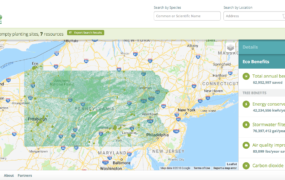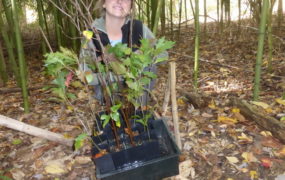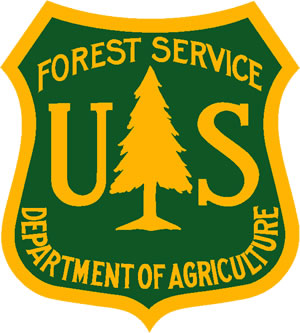Efforts to incorporate green infrastructure in urban landscapes are growing across the Chesapeake Bay watershed. Local governments are increasingly investing in rain gardens, permeable pavements, green roofs, bioswales, and other practices to decrease flooding and improve water quality. Although trees also provide stormwater benefits, expanding tree canopy in the urban environment is not always identified as a priority. Lancaster City in Pennsylvania serves as an exceptional example of a jurisdiction promoting tree canopy in an effort to augment green infrastructure and improve local water quality.
Each year Lancaster City contributes approximately 1 billion gallons of untreated wastewater to the Conestoga River, a tributary of the Chesapeake Bay. The City was built with a combined sewer system which collects and transports both domestic sewage and rainwater runoff for treatment. This system is effective throughout most of the year. However, during large rain storm events the system becomes overwhelmed, causing gallons of untreated sewage and stormwater to spill into the Conestoga.
In response to this problem, Lancaster City pursued various upgrades to their existing gray infrastructure. Furthermore, the City looked at green infrastructure practices to manage the stormwater overflow while also providing additional environmental, social, and economic benefits. Initial analyses found more than 50 opportunities to integrate green infrastructure across the city’s area. Another analysis calculated that employing green infrastructure practices would cost less than half the cost of fixing the problem by investing in storage tanks and other gray infrastructure practices alone. Green infrastructure offered a promising and cost-effective solution to the stormwater problem. By 2011, the City developed a comprehensive Green Infrastructure Plan.
Within their green infrastructure efforts, the City also uniquely recognized the importance of promoting urban tree canopy. Trees, too, are a type of green infrastructure as they intercept rain, filter pollutants, and reduce erosion. Therefore, as a first step the City completed an inventory of all street and park trees in 2011 and 2012. In addition, Pennsylvania Department of Conservation and Natural Resources (DCNR) Bureau of Forestry used LiDAR surveying technology to calculate that 28% of the city area was covered by tree canopy in 2010. Lancaster City used this information to set a goal to achieve 40% tree canopy cover.
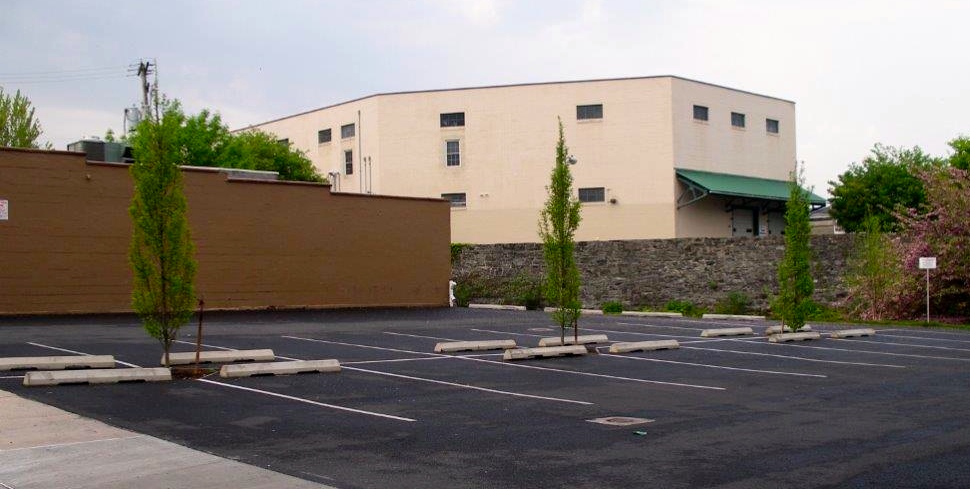
To work toward this goal the City focused on areas where they could increase canopy. Tree plantings were incorporated into the Green Streets Program. The City developed strategies to fill in empty street tree wells as well as add trees to parking lots (Figure 1) and cemeteries. Using the Plan-it Geo toolkit, managers assessed the riparian zone of the Conestoga and estimated a 46% existing tree canopy cover with an extra 33% of potential vegetative space that could be converted to tree canopy.
The City further considered whether ongoing green infrastructure projects could be enhanced with more trees. For instance, in addition to greening Brandon Park, the City added curb extensions with trees on a street adjacent to the park (Figure 2).
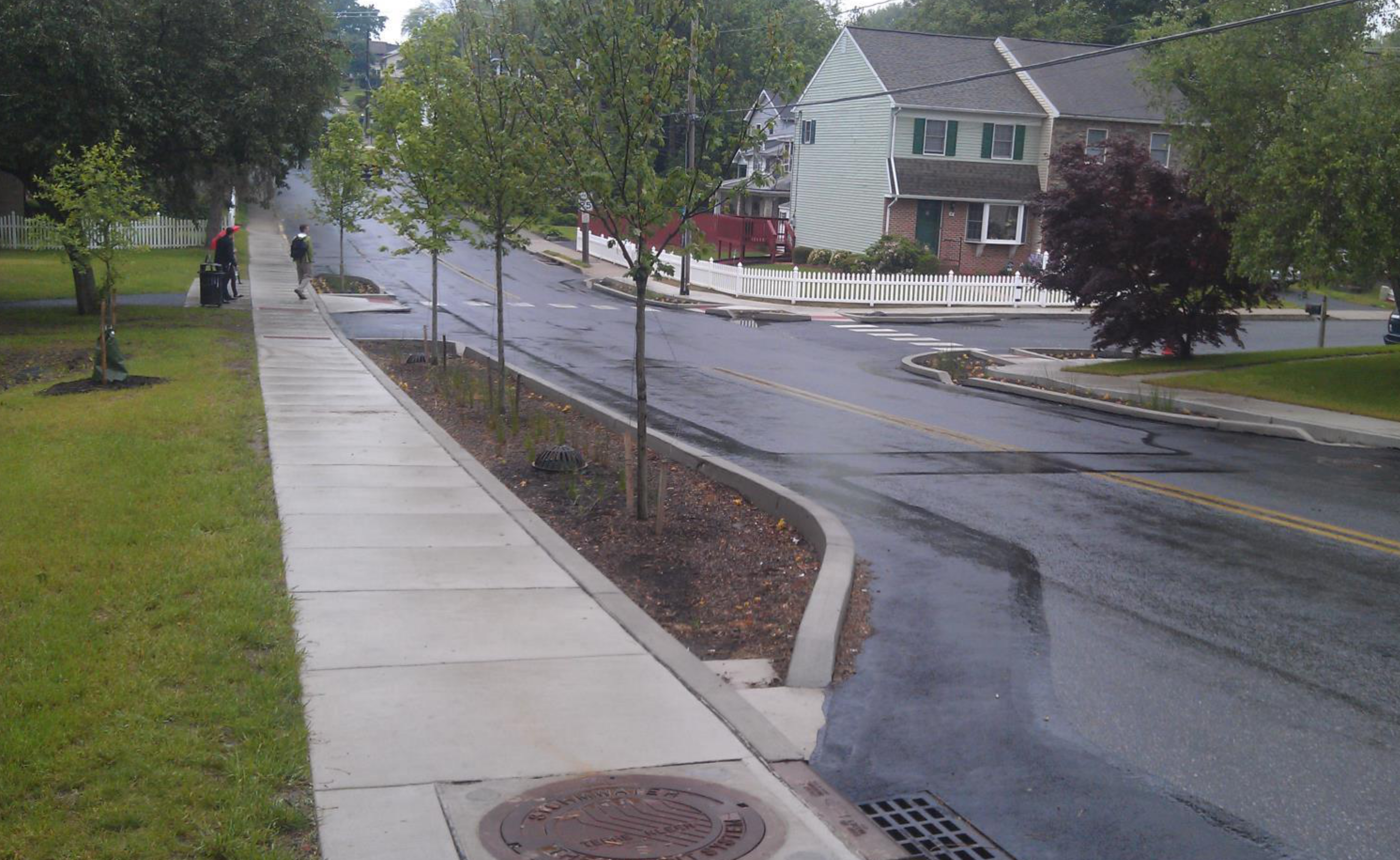
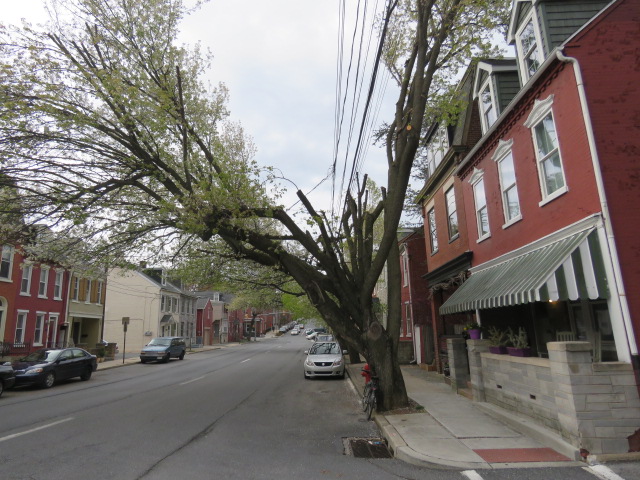
Beyond tree plantings, Lancaster City created a Tree Manual and updated the Trees Ordinance in 2014. The Tree Manual articulates the regulations and standards for arboriculture work within the city. The Tree Ordinance establishes the policies for the planting, removal, maintenance, and protection of trees along City streets and sidewalks, within parks and public open spaces, and protected trees on private properties. This ordinance also advances the goals, objectives, and strategies set forth in the City’s Green Infrastructure Plan. As described by Karl Graybill, an Environmental Planner for Lancaster City, “these documents institutionalize the importance of the urban forest as a part of the city’s infrastructure and set the groundwork for our urban tree canopy work.” Currently City managers are developing an Urban Forest Management Plan, which will be released later in 2016.
Groups such as the Shade Tree Commission and the newly formed Lancaster Tree Tenders are also an integral part of the Lancaster City’s tree canopy efforts. Graybill notes that overall efforts show slow but positive progress towards a higher urban tree canopy in the city. Unfortunately, some barriers stand in the way of getting to the goal of 40% tree canopy cover. These barriers include the removal of trees which occurs every year to address public safety concerns (Figure 3), mitigate the spread invasive pests, as well as for other reasons.
Still, the City of Lancaster’s efforts to plant and protect urban tree canopy are notable. By including tree canopy in their green infrastructure work, the City is fully capitalizing on the water quality benefits that trees provide. Lancaster City’s increasing tree canopy is ensuring a cleaner Conestoga River and Chesapeake Bay for all, and a healthier, safer, and greener environment for Lancaster City residents.
Related Resources
The City of Lancaster Save It! All About Trees
Homepage Slider Photo from Save It! Lancaster Website
Story written by Tuana Phillips (Chesapeake Research Consortium)

